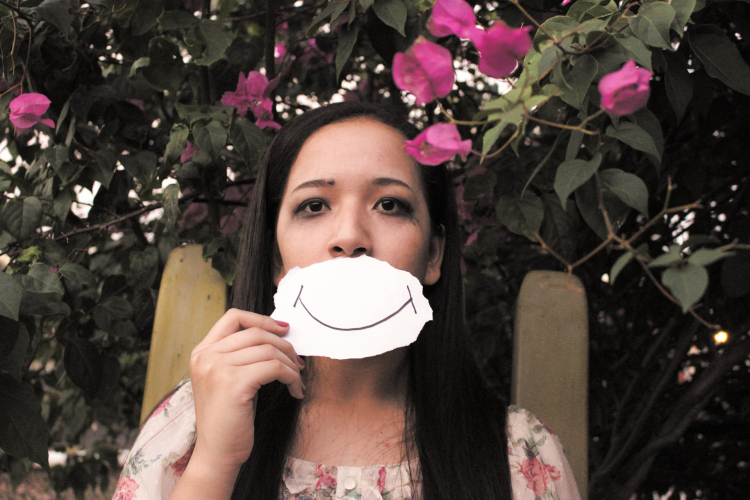Toxic Positivity: A New Form of Gaslighting

After being accepted to a master's program in France, I was looking forward to the opportunity to cross the ocean and continue my exchange in Europe and live with my boyfriend. But then came the devastating news: due to the pandemic, the borders between Massachusetts and Paris were closed.
A million questions ran across my mind... How would I get my visa? Will my university close? When will I be able to travel again? Will I see my boyfriend again? Hope was temporarily lost.
In those moments of desperation and despair, I wanted to feel every moment of pain, every tear, and the fear. As the pandemic raged, I heard every ounce of motivational and positive speech imaginable. At first I didn't mind the positive words. However, as time passed, I became aggravated. I felt that I had to be positive and keep a specific outlook as it was what others wanted, and to keep others happy, I could no longer voice my worry, anxiety, and fears. I felt I had to suppress my emotions and thoughts about COVID-19 to make others happy.
For the first time, I was experiencing toxic positivity.
Toxic positivity is "the excessive and ineffective over-generalization of a happy, optimistic state across all situations. The process of toxic positivity leads to the denial, minimization, and invalidation of the authentic human emotional experience."
Toxic positivity is a response that undermines one's emotions. Unfortunately, when scrolling through social media, we are bombarded with positivity posts. Whether you're scrolling through the explore page or your feed, the positivity trend has resulted in many motivational quotes, 'positive vibes only,' and 'everything happens for a reason' posts.
Social media tends not to showcase the brutal, gruesome, and challenging moments of real life. The danger? This lack of transparency displays a lack of authenticity and encourages the invalidation of emotions. Social media tends to suppress more complex emotions. The emotions that make us uncomfortable or are harder to understand, such as anger, grief, sadness, loneliness, and other emotions that have negative connotations, are avoided on social media. If toxic positivity goes unrecognized by social media consumers, there could be a surge in diluted communication and inhuman emotional responses.
Toxic positivity, at first glance, may not seem unhealthy. However, this form of communication can be harmful as it can cause shame, feelings of guilt, and the prevention of human emotional growth. It is a form of gaslighting. Gaslighting is defined as “a technique that undermines your entire perception of reality. When someone is gaslighting you, you often second-guess yourself, your memories, and your perceptions”. One could argue that social media has developed a new form of gaslighting. Social media gaslighting has been spreading disguised as the "positive vibes only" trend known as toxic positivity.
Photo Credit: Via Instagram @avamariedoodles
The social media positivity trend gained momentum at the beginning of the pandemic. Social media constructed the idea that our response, primarily due to global issues, needed to be 'just be positive,' 'find the silver lining,' 'take this time to be grateful' and 'others have it much worse. This movement has encouraged an archaic expression of feelings.
Not long ago, showing feelings and talking about our emotions was heavily frowned upon by society. The silent generation is known as silent for a reason. A generation that tip-toed around voicing uncomfortable feelings, uncomfortable circumstances, and social justice issues that were ringing alarm bells in their face. We as a society should not want to revert to an archaic form of communication. Expressing ourselves, the good, and the bad has led to monumental movements and successes in social justice crises. Repressing our emotions is not an option for our society's future. We need to be accepting of the raw and ugly truth. Perhaps our community needs to reevaluate how we teach our youth to deal with mindfulness of ourselves and others.
Ironically, this was not the intention of the positivity movement. Already from youth, we do not adequately educate our community on dealing with and expressing emotions appropriately. Mental Health illness is a severe condition that affects nearly 1 in 5 adults in the United States, or more than 51 million people. Our youth need to be adequately educated on how to express their emotions, appropriately respond to others' emotional needs, and be better informed on mental illnesses.
But why is toxic positivity incredibly harmful? It is dangerous because it is an invisible but nefarious form of communication. We, as a society, are often told that we need to be positive, even in challenging circumstances. However, with this movement on mainstream platforms, we are teaching and instilling into society that expressing raw human emotion is unacceptable. Positivity is not always a dangerous form of communication. However, it is essential to understand the right time and place to use it.
How can we avoid spreading toxic positivity? Below are a few mindful ways to recognize toxic positivity and switch your responses or comments to a non-toxic acceptance/validation form of communication.
Photo Credit: The Psychology Group: Fort Lauderdale









